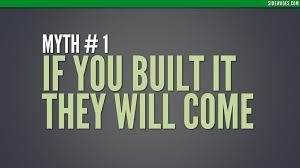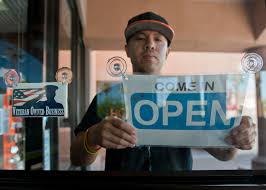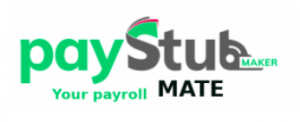
Presented by Paystrubmakr.com  By John Wolf and Tom Cullen CPA
By John Wolf and Tom Cullen CPA
World Health Organization
To prevent infection and to slow transmission of COVID-19, do the following:
-
Wash your hands regularly with soap and water, or clean them with an alcohol-based hand rub.
-
Maintain at least a 1-meter distance between you and people coughing or sneezing.
-
Avoid touching your face.
-
Cover your mouth and nose when coughing or sneezing.
-
Stay home if you feel unwell.
-
Refrain from smoking and other activities that weaken the lungs.
-
Practice physical distancing by avoiding unnecessary travel and staying away from large groups of people.
- Coronavirus who
Some types of businesses can thrive despite the lockdowns or because of the pandemic limitations.
New problems bring new solutions. One type of business may suffer while another has high demand for its service or product. Here you can find some ideas.
Types of businesses that find high demand during the COVID-19 pandemic:
- Cleaning services and sanitizing. Simple cleaning is not enough to kill possible viruses in restaurants or offices that may have people coming in and out. A professional team can get the job.
- Delivery services and massages. If all or part of your employees works from home, they may need to deliver stuff or written messages to their homes. Businesses that do not have high online sales need higher online sales that, naturally create a higher demand for the delivery of purchased goods.
- Fitness products and fitness classes are transmitted online. Gyms are weather closed or limited the number of users. The lockdown made people sit at home with a need for exercise. Here is where you can fill the market and use the new delivery service.
You have been putting in long hours as an employee, and you want to work for yourself instead, or maybe you already work as an independent contractor, and it is just time to officially put the legal stuff in place to protect and improve what you have created. So how do you start a business? That is a great question that we want to explore in more depth, and as the first order of business (pun intended) is to decide what type of legal structure we should use to protect ourselves.

Many alternatives are available to the new business regarding the legal form it should take. Likewise, an existing business may find it desirable to change forms.
There are advantages and disadvantages to any business form that are too numerous. However, the reader should have at least a general concept of the alternatives in examining corporations. The following discussion is not a thorough discussion of the tax or business aspects of the business types mentioned. Only the general “all-encompassing” concepts of each will be addressed.

Sole Proprietors
Sole proprietorships are the simplest business form since they are not separate tax or legal entities but extensions of the individual taxpayer that owns them. The business has no existence apart from the owner. Its liabilities are the owner’s liabilities.
Each asset in a sole proprietorship is treated separately for tax purposes rather than as part of one overall ownership interest. For example, a sole proprietor selling an entire business as a going concern figures gain or loss separately on each asset.
There is no special return to file for the sole proprietorship. The owner reports all business transactions on their income tax return (i.e., Schedule C, Form 1040).
A sole proprietor is considered self-employed. If a taxpayer is a sole proprietor, there is no tax effect if they take money out of business or transfer it to or from it.
Advantages
The advantages of a sole proprietorship are:
(1) Organizational costs should be below;
(2) Legal, accounting, and administrative fees are lower;
(3) State and federal income taxes may be lower; and
(4) The administration is less complicated.
Disadvantages
The disadvantages of a sole proprietorship are:
(1) Personal liability,
(2) Inability to income split,
(3) Limited fringe benefits, and
(4) Self-employment tax.
Self Employment Tax

If a taxpayer is a sole proprietor, they will have to pay self-employment tax (§1401). The self-employment tax is the non-employee portion of the Social Security tax-raising system. In 2017, self-employment tax takes 15.3% of income (12.4% for social security [OASDI] and 2.9% for Medicare [HI]) from self-employment. Deductible items like home mortgage interest, real estate taxes, state income tax, Keogh plan or IRA deductions, etc. don’t reduce self-employment tax. However, since 1990, business deductions, plus an amount equal to the self-employment tax on half of the self-employment income, are allowable in reducing the self-employment income.
In 2017, the social security tax is imposed on the first $127,200 of self-employment
income and the Medicare tax is imposed on all self-employment income.

In the next installment of our series about how to start a business and what form of business should be used, we will discuss corporations! This is super important if you want the right processes and protections in place for your hard work. If you want to be financially empowered, then learning about how to run your business is super important. Once you choose your form to do business, you will need to pay your employees as you grow larger, or maybe pay yourself. We here at paystubmakr.com are happy to help answer questions about your payroll and also about other business questions!
paystumbmakr.com team thanks you for a visit and reading this blog Pays tub online About pay stubs
Learn how to create your pay stub
paystubmakr.com

